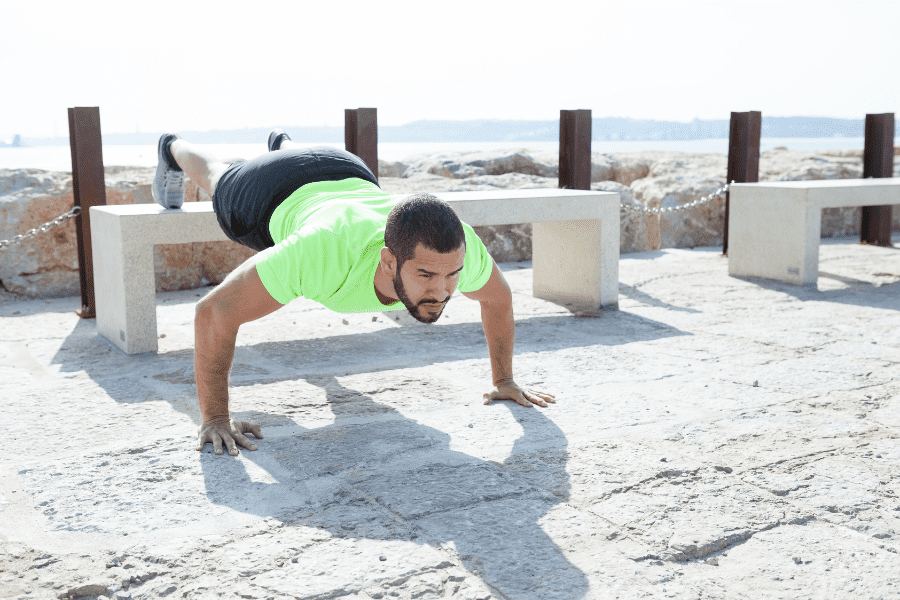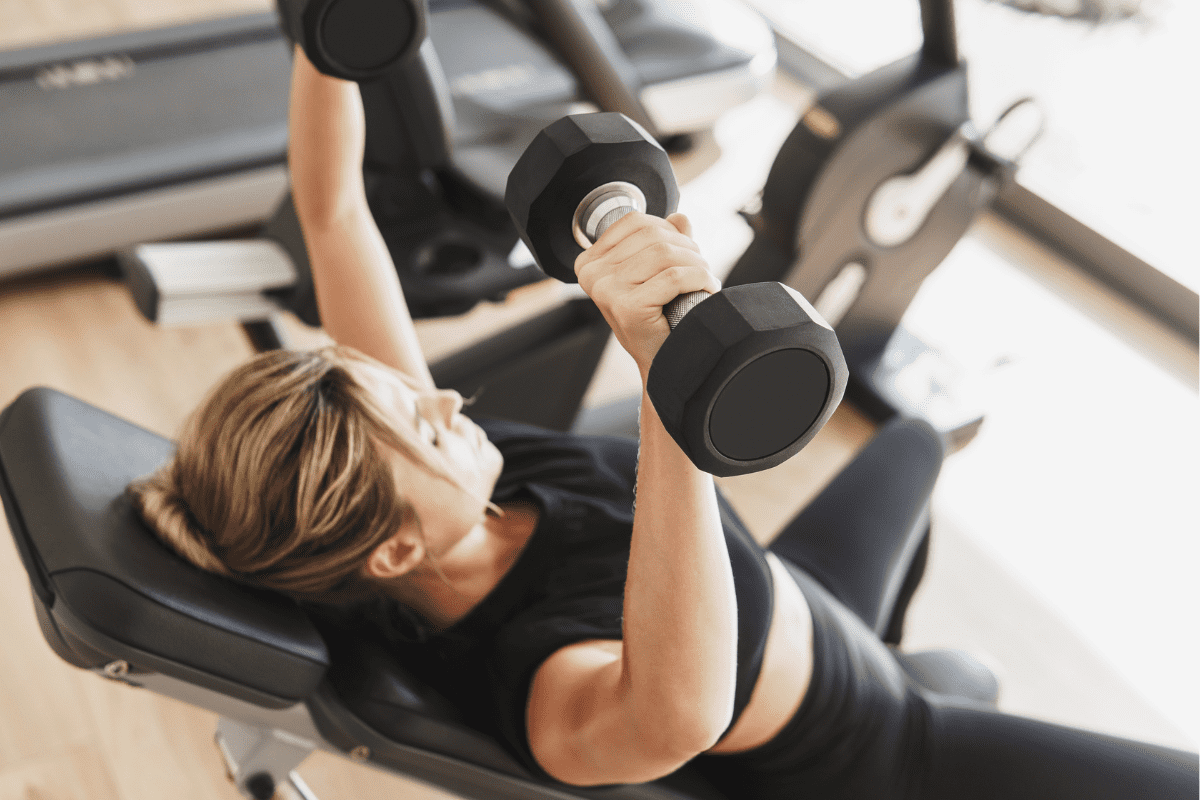Dumbbell Incline Bench Press (How To, Muscles Worked)
The dumbbell incline bench press is a fantastic upper-body strength exercise. The dumbbell is a uniquely powerful implement for upper body strength and shoulder stability.
The incline dumbbell bench press has proved to be a helpful upper body lift for court and field athletes, powerlifters, and general population lifters.
In this guide, I will be going over how to incline dumbbell bench press, coaching points, common mistakes, and alternatives if you happen to need them.
How To Do DB Incline Bench Press
Equipment Needed
- Dumbbells
- Adjustable Bench (Capable of changing angles)
Step-by-Step Instruction
- Determine the angle for your incline bench. Most programs would refer to a 45-degree angle as ideal for it provides the best chest and shoulder engagement.
- As you go higher with your angle, you are moving more toward a shoulder press. The flatter the bench gets, you are moving more toward a regular bench press.
- Grab your dumbbells, sit on the edge of the bench, and sit the dumbbells on your thighs vertically.
- Take a deep breath, lie flat on your back on the bench, and get your dumbbells in position ready to press.
- Keep your feet flat on the floor.
- Keep your butt on the bench.
- Pull your shoulder blades together and keep the back of your head on the bench. You will slightly arch your back. Keep your core tight and keep the shoulder blades pulled back tight.
- The dumbbells should be slightly angled (representative of the path you are descending with your elbows).
- Press the dumbbells up.
- Control the dumbbells down during the eccentric movement and draw the dumbbells in, keeping the elbows at about a 45-degree angle away from the torso.
- The dumbbells will make contact with your torso right at the nipple line on the chest.
- Once contact is made, drive the dumbbells back up.
- When your set is done, do not freely drop the dumbbells without checking your surroundings. You could drop the dumbbell and it might hit a person nearby. Or your could drop your dumbbell and crush your fingers on a dumbbell that was left next to your bench.
- The best way to finish a set is to bring the dumbbells back to your thighs and stand up with them. Or have a lifting partner take them from you.
Coaching Points
Remember as you move your bench up, the more you are engaging the shoulders and less chest. Be sure your angle matches the goals you’ve set for pressing.
This is a very shoulder-friendly pressing movement. Because the implement is a dumbbell, the range of motion is increased, the shear force on the shoulder is decreased, and the shoulder stabilizing muscles are engaged.
I would highly recommend this movement to any athlete. It provides all the benefits that a pressing movement can offer with minimal risk.
Common Mistakes
- Do not let the elbows flare out away from the midline. The shoulders are incredibly vulnerable in these positions and the sheer force placed on the shoulders will lead to injury if the technique is not made a priority.
- Remember to finish your sets with awareness so that you and your training partner/fellow gym members stay safe and injury-free.
How Many Reps?
If you are trying to emphasize strength development, I recommend 4 to 5 sets, 5 to 7 reps each set. If training for hypertrophy, I recommend 3 to 4 sets of 8 to 12 reps each.
Muscles Worked
- Chest
- Shoulders
- Triceps
- Biceps (Isometric and eccentric contributors)
Dumbbell Incline Bench Press Alternatives
Don’t have dumbbells? Want to add some variety to your workouts? Here are a few alternatives you may be able to try instead.
Want even more options? Here are 9 of my favorite alternatives for Dumbbell Incline Bench Press.
Landmine Single Arm Press
Push one end of your barbell into a corner or stable surface. (I recommend creating a DIY Landmine Attachment with a tennis ball) Load the other end with some weight. I would recommend starting very light at first as you get used to this movement that is most likely new.
Standing in an athletic position, perform single-arm presses with the “landmine”.
Feet Elevated Push-ups

Place your feet up on a bench or a box and do Feet Elevated Push Ups. By elevating the feet, you’re simulating an incline on the bench to target the upper chest and shoulders.
Of course, if you don’t have a bench, old-school push-ups are also still a great alternative for any chest exercise.
Med Ball Chest Pass
Stand in an athletic position with a lighter medicine ball (for most, 10-15 pounds will work well here). Extend the hips and chest pass the ball into the wall. This should be fast and explosive.
Medicine Ball Chest Passes are also a great warm-up exercise for athletes getting ready for a bench day.
More Info and Links
Looking for some more great supplemental work for your bench day? Head over to our exercise library to find step-by-step exercises to help you reach your athletic potential.

